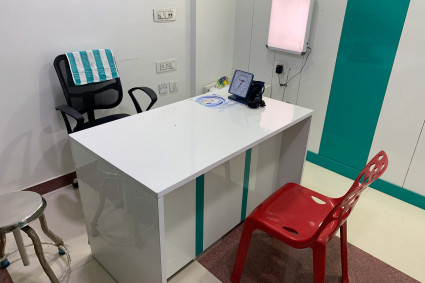The Therapeutic Goods Administration (TGA) regulates therapeutic goods in Australia (TGA). Therapeutic products are things that have something to do with one's well-being. People use them for a variety of purposes, including treating illnesses and accidents, altering bodily functions, preventing or checking pregnancy, and removing or changing body parts.
In this article, we are going to describe how therapeutic products are approved, how their supply is regulated, and how their protection is monitored in Australia. It is not meant to be a detailed account of the TGA's operations, and it focuses on areas likely to be of concern to the Australian Parliament.
The Therapeutic Goods Administration
Therapeutic goods are regulated by the TGA. They make sure that the products are of high quality, safe to use, and function as expected. The Therapeutic Goods Act 1989 (the Act), which governs the supply, import, export, manufacture, and advertisement of therapeutic goods, is administered by the TGA.
The TGA is a division of the Australian Department of Health. It is mainly self-funded and runs on a cost-recovery model. The TGA imposes annual charges on the industry and charges fees for services (such as testing a new product).
All monies received by the TGA are credited to the Therapeutic Goods Administration Account, which is a special account established under section 45 of the Act. These monies are used to fund regulatory activities in Australia and to allow the TGA to participate in international regulatory activities for therapeutic goods.
The Approval Process for Therapeutic Goods
An individual or organisation who wishes to sell a therapeutic good in Australia must first obtain market authorisation from the Therapeutic Goods Administration (TGA). The TGA reviews the application, and if market authorisation is granted, the therapeutic good is registered on the Australian Register of Therapeutic Goods (ARTG).
Therapeutic products must, in most cases, be registered on the ARTG before they can be legally manufactured, supplied, or exported from Australia. The ARTG can be found on the internet. A Public Overview document is attached to each entry, describing the date the product was added to the ARTG, its planned use, and the name of the product's sponsor (usually a pharmaceutical company or device manufacturer).
A Consumer Medicines Information (CMI) leaflet (for patients) and a Product Information (PI) guide (for pharmacists) are available for many medicines. Medicines may be prescribed for a disease or group of people other than those mentioned in the ARTG entry. This is referred to as 'off-label' prescribing, and it is very popular.
The TGA evaluates business authorisation applications using a risk-based approach. Lower-risk products are subjected to less review based on registration, while higher-risk products are subjected to a more rigorous analysis that requires active evaluation of information given by sponsors.
The Application Pathways for Medicines
Depending on the level of risk involved, applications to include a medication on the ARTG follows various paths:
Listed medicines (e.g., vitamins and complementary medicines) contain only a few low-risk ingredients and make only minor health statements from a list of approved indications (reasons for use). The application process is based on sponsors' self-certification, with a focus on the product's protection and consistency rather than its effectiveness.
Only a few low-risk ingredients are used in assessed listed drugs, but they make intermediate-level health statements. The application pathway includes sponsors' self-certification of quality and protection, and the TGA tests effectiveness proof.
Registered medicines (which include all prescription medicines) can contain higher-risk ingredients and make broad health claims. The TGA tests the medicine's protection and efficiency. The assessment of a new prescription drug by the TGA usually takes 255 working days. The sponsor's comprehensive dossier of data and evidence (from clinical trials and other sources) are evaluated by scientific and clinical experts.
The TGA may also seek recommendations from the Medicines Advisory Committee, which is made up of experts. All of this knowledge is weighed by a senior TGA official, who determines whether the medicine's advantages outweigh the risks, and therefore whether it should be registered for sale in Australia.
Sponsors of new essential and life-saving prescription drugs may apply for approval to use a priority review pathway, which allows for a more expedited review of their applications (around 150 working days). The provisional approval process allows sponsors of promising new prescription drugs (with only preliminary clinical data) to apply for time-limited registration. When enough clinical evidence to validate safety and effectiveness becomes available, sponsors may apply for full registration.
Proof that medicines are manufactured by Good Manufacturing Practices (GMP) is needed for all pathways. GMP refers to the standards and protocols that must be followed to ensure that medicinal products are of high quality. The TGA inspects Australian (and some international) manufacturers to ensure that GMP requirements are met.
The Application Pathways for Medical Devices
Medical devices are used to treat diseases, as well as to alter or control body functions. They usually do so by using human, electronic, or chemical means. They are categorised based on their risk, ranging from low risk (Class I) for bandages to high risk (Class III and Active Implantable Medical Devices) for heart valves and pacemakers.
To be included in the ARTG, a medical device's manufacturer must prove that it complies with the Basic Principles specified in Schedule 1 of the Therapeutic Products (Medical Devices) Regulations 2002. The Essential Principles defines the design and manufacturing standards for medical devices to ensure that they are both safe and efficient.
They should also perform conformity assessment, which is a systematic and continuous analysis of facts and procedures to ensure that a device complies with the Basic Principles. Some low-risk devices require a manufacturer's self-assessment of conformity, whereas higher-risk devices need a TGA notified body conformity assessment certification.
The level of inspection the TGA applies to applications is determined by the device's level of risk. Some low-risk devices can be automatically included in the ARTG upon application (with supporting evidence kept by the sponsor), some devices will be included in the ARTG based on the details given in the application, and the TGA can inspect some higher-risk applications.
Priority Review may be applied for by manufacturers or supporters who want to speed up the process of TGA conformity evaluation or ARTG inclusion. They must show that the device is a significant improvement over current therapies for a severe medical condition to be considered.
Get your products to the market with the help of a trusted agent/sponsor!
Acquiring the approval of the Therapeutic Goods Administration can be complicated and time-consuming. With the help of an experienced sponsor that is Vicki Partridge, the process will be well taken care of. Get in touch with Vicki today at +61 450 962 581 to schedule an appointment.





